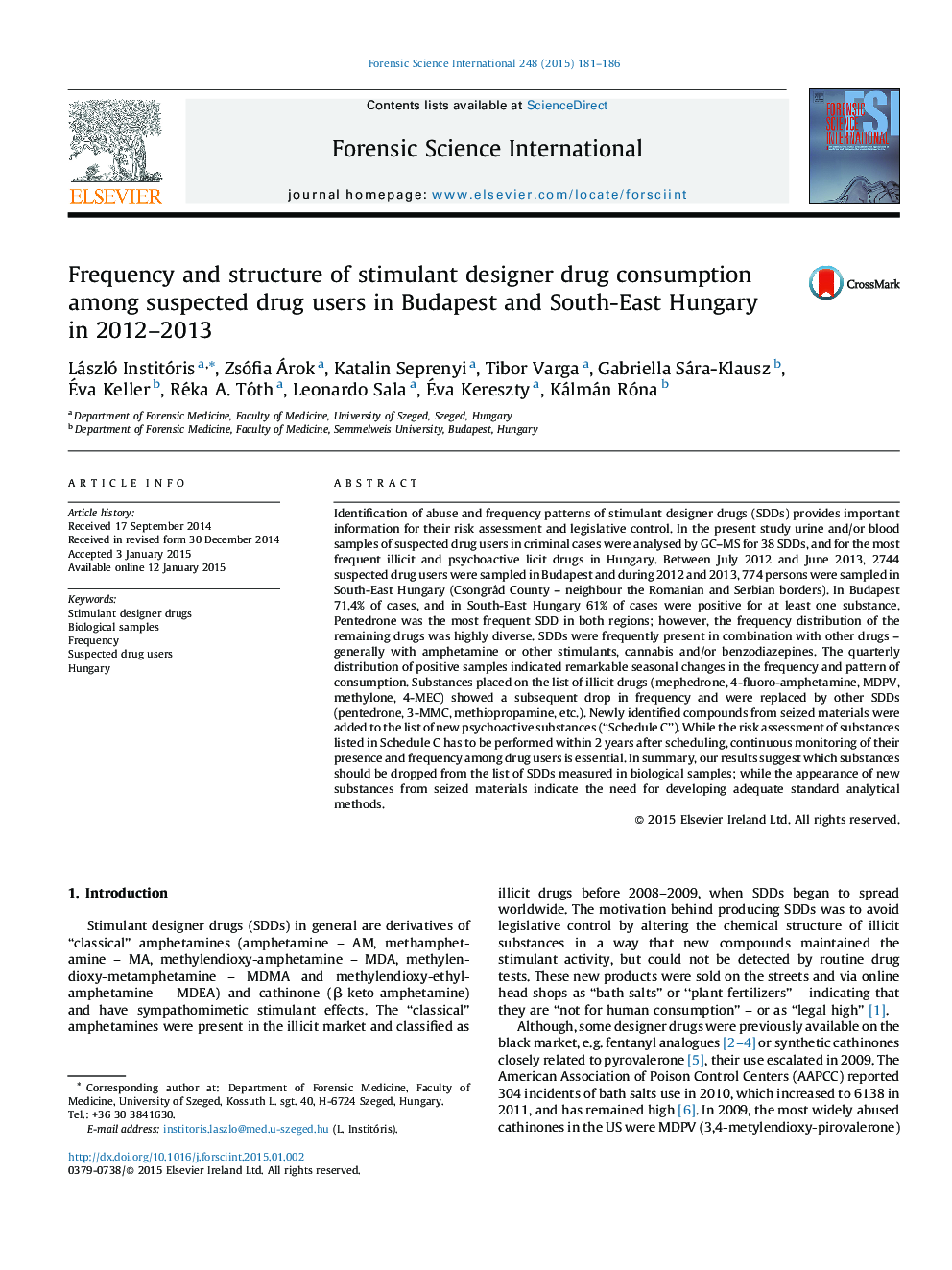| کد مقاله | کد نشریه | سال انتشار | مقاله انگلیسی | نسخه تمام متن |
|---|---|---|---|---|
| 95519 | 160433 | 2015 | 6 صفحه PDF | دانلود رایگان |
• Stimulant designer drug (SDD) consumption was compared in two regions of Hungary.
• Target population: suspected drug users in Budapest and South-East Hungary.
• In 2012–2013 pentedrone was the most frequently used stimulant designer drug.
• The frequency of the other SDDs showed differences in the two areas.
• Consumption of SDDs highly decreased after listing them on illicit drug registry.
Identification of abuse and frequency patterns of stimulant designer drugs (SDDs) provides important information for their risk assessment and legislative control. In the present study urine and/or blood samples of suspected drug users in criminal cases were analysed by GC–MS for 38 SDDs, and for the most frequent illicit and psychoactive licit drugs in Hungary. Between July 2012 and June 2013, 2744 suspected drug users were sampled in Budapest and during 2012 and 2013, 774 persons were sampled in South-East Hungary (Csongrád County – neighbour the Romanian and Serbian borders). In Budapest 71.4% of cases, and in South-East Hungary 61% of cases were positive for at least one substance. Pentedrone was the most frequent SDD in both regions; however, the frequency distribution of the remaining drugs was highly diverse. SDDs were frequently present in combination with other drugs – generally with amphetamine or other stimulants, cannabis and/or benzodiazepines. The quarterly distribution of positive samples indicated remarkable seasonal changes in the frequency and pattern of consumption. Substances placed on the list of illicit drugs (mephedrone, 4-fluoro-amphetamine, MDPV, methylone, 4-MEC) showed a subsequent drop in frequency and were replaced by other SDDs (pentedrone, 3-MMC, methiopropamine, etc.). Newly identified compounds from seized materials were added to the list of new psychoactive substances (“Schedule C”). While the risk assessment of substances listed in Schedule C has to be performed within 2 years after scheduling, continuous monitoring of their presence and frequency among drug users is essential. In summary, our results suggest which substances should be dropped from the list of SDDs measured in biological samples; while the appearance of new substances from seized materials indicate the need for developing adequate standard analytical methods.
Journal: Forensic Science International - Volume 248, March 2015, Pages 181–186
